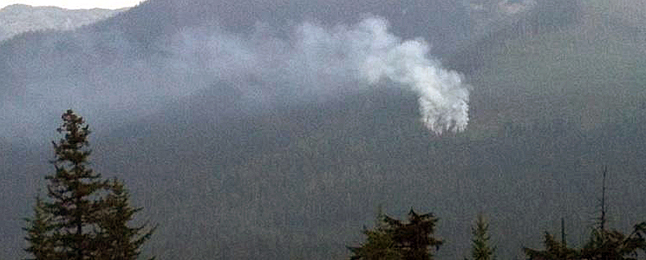
By David F. Rooney
Who says lightning doesn’t strike twice, or thrice for that matter? Certainly not Parks Canada fire expert Simon Hunt. He’s see it happen time and again.
In fact, the Prairie Hills fire, which is currently incinerating 2.7 ha of forest in Glacier National Park’s Beaver Valley, is not burning over virgin forest, as it were.
Hunt, who has 20 years experience dealing with forest fires and is a fire-behaviour analyst, said this area was burned in 1983, then again in 1993 and — yet again — now. In fact, there was a fire in the same area on July 13. And now there’s this new one.
“As the crow flies it’s three kilometres from the Trans-Canada and it’s burning on the side of a mountain,” he said in an interview, adding that “conditions are optimal.”
“1) we’re late in the season; 2) It’s mild and we’re entering a period of cool, moist weather; 3) our (firefighting) resources are widely available.”
Hunt said that because of that Parks has decided to let the fire burn itself out. That way it will consume whatever fuels are available on the forest for and the burned-over mountainside will form a kid of natural firebreak against any future fire in the same area.
Hunt also noted that while there the lightning of a day ago ignited a few spot fires, all of them were extinguished by the rain.




